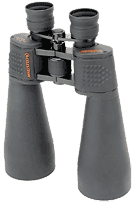|
1
|
Beginning of the second decade of the third millennium.
|
|
1
|
Moon near Antares (30° from Sun, morning sky) at 20h UT.
|
|
2
|
Moon near Mercury (21° from Sun, morning sky) at 16h UT.
|
|
3
|
Earth at Perihelion (closest to Sun) at 19h UT. The Sun-Earth distance is 0.983341 a.u. or 147.1 million kilometers.
• Sun at Aphelion and Perihelion (Anthony Ayiomamitis)
|
|
4
|
Quadrantid Meteor Shower peaks at 1h UT. Active between 1-10 January. Produces up to 120 meteors per hour. Radiant is in northern Bootes. Low moonlight makes for very favorable viewing conditions this year.
• The Quadrantids (Gary Kronk)
• The Quadrantids (IMO)
|
|
4
|
New Moon at 9:03 UT. Start of lunation 1089.
• Lunation Number (Wikipedia)
|
|
4
|
Partial Eclipse of the Sun at 8:51 UT. Visible from much of Europe, North Africa and central Asia. Eclipse begins at 06:40, ends at 11:01 UT. WARNING: NEVER LOOK AT THE SUN -- it will instantly damage your eyes! Instead, use a pinhole in a card to project the Sun's image onto a surface.
• Partial Solar Eclipse of 2011 January 04 (NASA)
• Observing Solar Eclipses Safely (Mr Eclipse)
|
|
8
|
Venus at greatest elongation, 47° west from Sun (morning sky) at 16h UT. Mag. -4.4.
|
|
9
|
Mercury at greatest elongation, 23° west of Sun (morning sky) at 14h UT. Mag -0.2.
|
|
10
|
Moon at apogee (farthest from Earth) at 6h UT (distance 404,977 km; angular size 29.5').
|
|
10
|
Moon near Jupiter at 11h UT. Mag. -2.3.
|
|
12
|
First Quarter Moon at 11:32 UT.
|
|
15
|
Moon near the Pleiades at 14h UT (evening sky).
|
|
16
|
Moon near Aldebaran (evening sky) at 8h UT.
|
|
19
|
Full Moon at 21:22 UT.
• Full Moon Names (Wikipedia)
|
|
20
|
Moon near Beehive cluster M44 (midnight sky) at 9h UT.
|
|
21
|
Moon near Regulus (morning sky) at 23h UT.
|
|
22
|
Moon at perigee (closest to Earth) at 0h UT (362,792 km; 32.9').
|
|
25
|
Moon near Saturn (morning sky) at 4h UT. Mag. +0.7.
|
|
25
|
Moon near Spica (morning sky) at 18h UT.
|
|
26
|
Last Quarter Moon at 12:58 UT.
|
|
29
|
Moon near Antares (morning sky) at 0h UT.
|
|
30
|
Moon near Venus at 3h UT (morning sky).
|
|
All times Universal Time (UT). USA Eastern Standard Time = UT - 5 hours.
|


